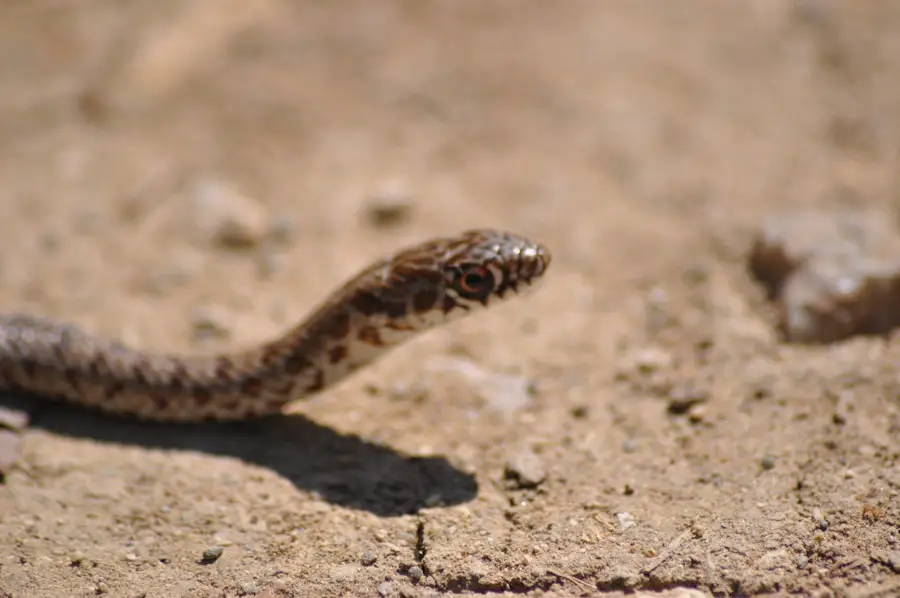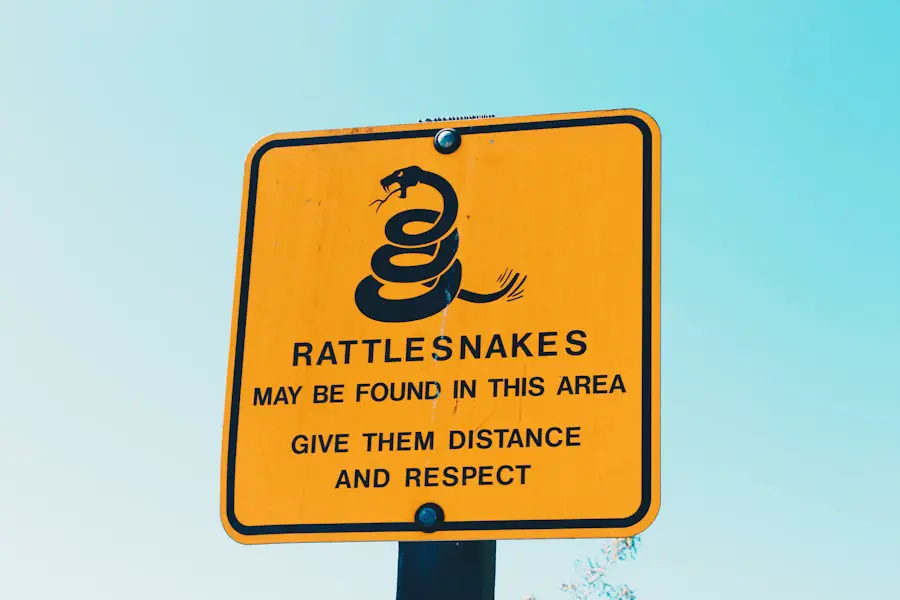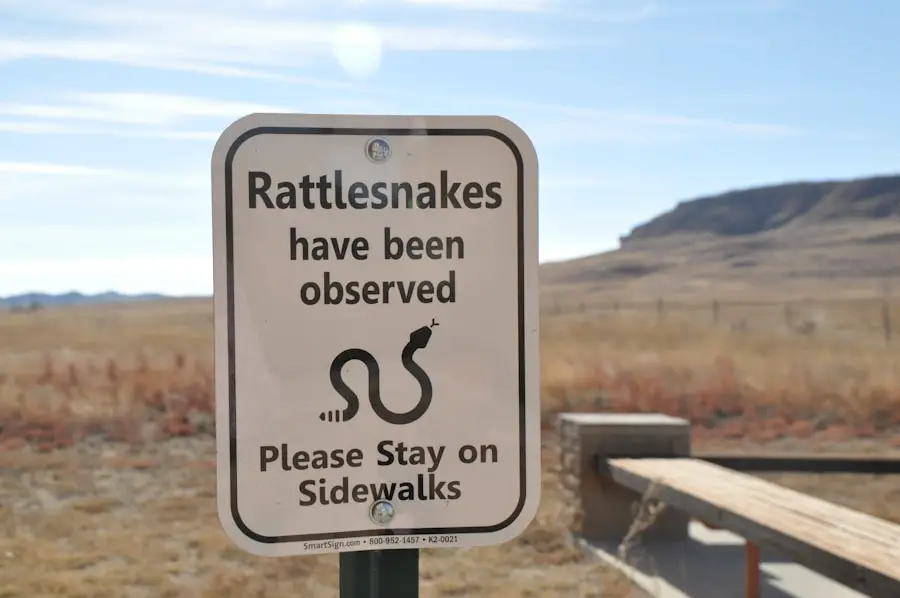Rattlesnakes, belonging to the family Viperidae, are fascinating creatures that exhibit a range of behaviors influenced by their environment and biological instincts. These snakes are primarily found in the Americas, with a significant presence in the southwestern United States. Their behavior is largely dictated by their need for survival, which includes hunting for food, avoiding predators, and finding suitable habitats.
Rattlesnakes are ectothermic, meaning they rely on external sources of heat to regulate their body temperature. This characteristic leads them to bask in the sun during cooler mornings and retreat to shaded areas or burrows during the hottest parts of the day. Rattlesnakes are also known for their unique defensive behavior.
When threatened, they often employ a warning system that includes the iconic rattle at the end of their tails. This rattle is made up of interlocking segments of keratin that produce a distinctive sound when vibrated. The rattle serves as an auditory warning to potential threats, signaling that the snake is prepared to defend itself if necessary.
However, it is important to note that not all rattlesnakes will rattle before striking; some may choose to remain silent and strike without warning, especially if they feel cornered or are surprised. Understanding these behaviors can help individuals appreciate the ecological role of rattlesnakes while also recognizing the importance of caution when encountering them in the wild.
Key Takeaways
- Rattlesnakes are generally shy and will only strike if they feel threatened or cornered.
- Common signs of a rattlesnake bite include severe pain, swelling, and discoloration at the site of the bite.
- First aid measures for a rattlesnake bite include keeping the affected area immobilized and at or below heart level.
- Seeking immediate medical attention is crucial after a rattlesnake bite to receive antivenom and prevent further complications.
- To prevent rattlesnake bites, wear protective clothing, watch where you step, and avoid reaching into areas where snakes may be hiding.
Signs and Symptoms of a Rattlesnake Bite
Recognizing the signs and symptoms of a rattlesnake bite is crucial for prompt treatment and recovery. The initial indication of a bite is often a sharp pain at the site, which may be accompanied by swelling and redness. The bite may also produce two distinct puncture wounds, which are characteristic of venomous snake bites.
In some cases, individuals may experience immediate symptoms such as nausea, dizziness, or difficulty breathing, which can indicate a more severe reaction to the venom. As time progresses, additional symptoms may manifest, including bruising around the bite area and systemic effects such as increased heart rate or sweating. The venom of rattlesnakes contains a complex mixture of enzymes and proteins that can lead to tissue damage and disrupt blood clotting.
This can result in more severe complications, such as necrosis or internal bleeding, if left untreated. It is essential for anyone bitten by a rattlesnake to be aware of these symptoms and to seek medical attention as soon as possible, as timely intervention can significantly improve outcomes.
First Aid Measures for a Rattlesnake Bite

In the event of a rattlesnake bite, immediate first aid measures can play a critical role in minimizing the effects of the venom. The first step is to remain as calm as possible, as increased heart rate can accelerate the spread of venom through the bloodstream. It is advisable to keep the affected limb immobilized and at or below heart level to reduce blood flow to the area.
This can help slow down the absorption of venom into the circulatory system. Another important first aid measure is to remove any tight clothing or jewelry near the bite site. Swelling may occur rapidly, and constricting items can exacerbate this issue.
Additionally, it is crucial to avoid applying ice or a tourniquet to the bite area, as these methods can cause further tissue damage and complications. Instead, keeping the victim still and calm while waiting for medical assistance is paramount. If possible, taking note of the snake’s color and pattern can be helpful for medical professionals in determining the appropriate treatment.
Seeking Medical Attention
| Country | Percentage of Population Seeking Medical Attention |
|---|---|
| United States | 88% |
| United Kingdom | 92% |
| Germany | 95% |
| France | 90% |
Seeking medical attention after a rattlesnake bite is not just advisable; it is essential for ensuring proper care and treatment. Even if initial symptoms appear mild, the effects of rattlesnake venom can escalate quickly and unpredictably. Medical professionals will typically assess the severity of the bite through physical examination and may order laboratory tests to evaluate blood clotting and other vital functions.
Antivenom is often administered in cases of significant envenomation, which can neutralize the effects of venom and prevent further complications. In addition to administering antivenom, healthcare providers will monitor vital signs closely and provide supportive care as needed. This may include intravenous fluids to maintain hydration and medications to manage pain or allergic reactions.
The length of hospital stay can vary depending on the severity of the bite and the individual’s response to treatment. It is important for patients to follow up with their healthcare provider after discharge to ensure proper healing and address any lingering effects from the bite.
Prevention Tips for Avoiding Rattlesnake Bites
Preventing rattlesnake bites requires awareness and proactive measures, especially for those who spend time in areas where these snakes are prevalent. One effective strategy is to wear appropriate footwear and clothing when hiking or exploring natural habitats. Sturdy boots that cover the ankles can provide an extra layer of protection against snake bites.
Additionally, wearing long pants can help shield the legs from potential encounters with snakes hidden in tall grass or underbrush. Another key prevention tip is to remain vigilant while walking in rattlesnake territory. Staying on designated trails and avoiding areas with dense vegetation can reduce the likelihood of an unexpected encounter.
It is also advisable to make noise while hiking; rattlesnakes often prefer to avoid humans and may retreat if they hear footsteps or voices approaching. Educating oneself about rattlesnake behavior and habitats can further enhance safety measures, allowing individuals to enjoy outdoor activities while minimizing risks.
How to Stay Calm and Manage Panic in the Event of a Bite

Experiencing a rattlesnake bite can be an incredibly frightening event, leading to panic and anxiety for both the victim and those nearby. Managing panic is crucial for ensuring that appropriate first aid measures are taken promptly. One effective technique for staying calm is focused breathing; taking slow, deep breaths can help reduce anxiety levels and promote a sense of control over the situation.
Encouraging the victim to focus on their breathing can also help stabilize their heart rate and minimize stress. Additionally, maintaining a calm demeanor can have a positive impact on those around you. If you are with someone who has been bitten, offering reassurance and support can help alleviate their fears.
It is important to remind them that medical help is on the way and that staying still will aid in their recovery. Engaging in simple distractions, such as talking about non-threatening topics or recalling positive memories, can also serve as an effective way to divert attention from panic-inducing thoughts.
What Not to Do When Bitten by a Rattlesnake
When faced with a rattlesnake bite, there are several common misconceptions about first aid that should be avoided at all costs. One major mistake is attempting to suck out venom from the bite site; this method is not only ineffective but can also introduce bacteria into the wound, leading to infection. Similarly, using a tourniquet is discouraged because it can restrict blood flow and cause tissue damage beyond what the venom would have inflicted.
Another critical error is applying ice or cold packs directly to the bite area. While it may seem logical to reduce swelling with ice, this practice can actually worsen tissue damage caused by venom. Additionally, consuming alcohol or caffeine in an attempt to alleviate pain or anxiety should be avoided; these substances can exacerbate symptoms and complicate medical treatment later on.
Instead, focusing on remaining calm and seeking professional medical assistance should be prioritized.
Aftercare and Recovery from a Rattlesnake Bite
After receiving treatment for a rattlesnake bite, proper aftercare is essential for ensuring a full recovery. Patients are often advised to keep the affected limb elevated when possible to reduce swelling and promote healing. Regular follow-up appointments with healthcare providers may be necessary to monitor recovery progress and address any complications that arise from tissue damage or infection.
During recovery, individuals may experience lingering symptoms such as pain or swelling at the bite site. Pain management strategies may include over-the-counter pain relievers or prescribed medications from healthcare providers. It is also important for patients to stay hydrated and maintain a balanced diet to support their body’s healing process.
Engaging in light physical activity as recommended by healthcare professionals can aid in regaining strength and mobility over time. In conclusion, understanding rattlesnake behavior, recognizing signs of bites, administering first aid, seeking medical attention promptly, preventing encounters, managing panic during emergencies, avoiding common mistakes after bites, and ensuring proper aftercare are all critical components in dealing with rattlesnake bites effectively. By being informed and prepared, individuals can navigate potential encounters with these fascinating yet dangerous reptiles safely.
If you find yourself hiking in rattlesnake territory and are concerned about what to do if bitten, it’s important to be prepared. One helpful article to check out is “Best Travel Toothbrushes for Your Next Adventure”, which offers tips on packing essential items for your outdoor excursions. Being equipped with the right gear, such as odor-resistant Merino wool travel socks and noise-canceling earbuds for flights, can make a big difference in your overall hiking experience.
Love travel? Join Our Facebook Community
FAQs
What should I do if I am bitten by a rattlesnake while hiking?
If you are bitten by a rattlesnake while hiking, it is important to seek medical attention immediately. Call 911 or get to the nearest hospital as soon as possible.
What should I not do if I am bitten by a rattlesnake?
Do not try to suck out the venom, apply a tourniquet, or use ice on the bite. These methods are not effective and can actually make the situation worse.
How can I prevent getting bitten by a rattlesnake while hiking?
To prevent getting bitten by a rattlesnake while hiking, stay on designated trails, watch where you step, and avoid reaching into areas where you cannot see.
What are the symptoms of a rattlesnake bite?
Symptoms of a rattlesnake bite may include severe pain at the site of the bite, swelling, bruising, nausea, vomiting, and difficulty breathing.
What should I do while waiting for medical help after a rattlesnake bite?
While waiting for medical help after a rattlesnake bite, try to keep the affected area immobilized and at or below heart level. Remove any tight clothing or jewelry near the bite site.
